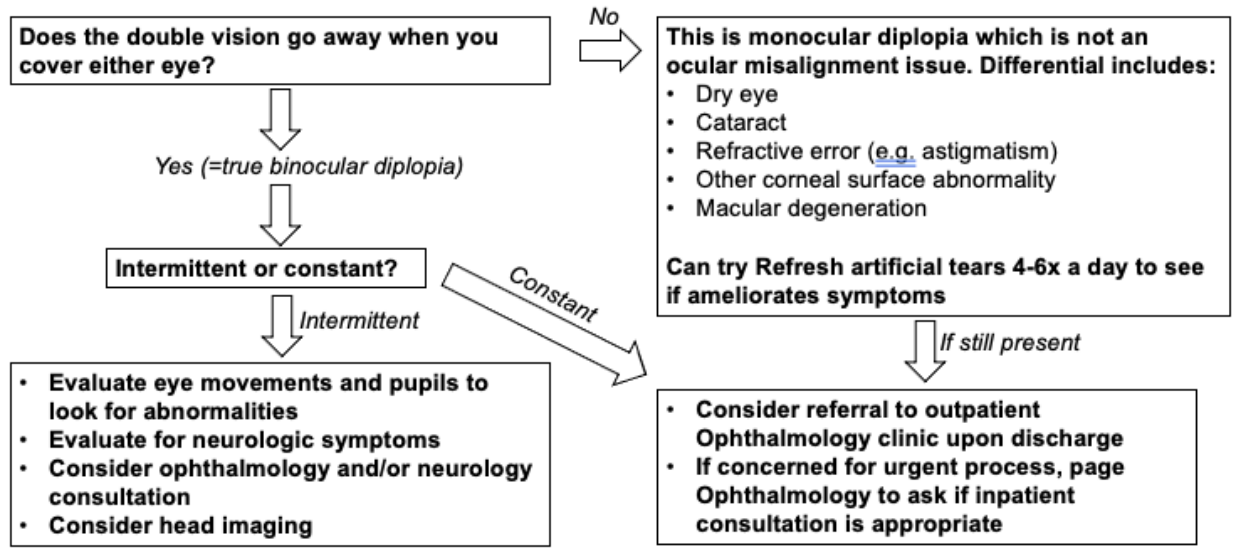Approach to Double Vision (Diplopia)¶
Jonathan A. Barnett
Approach to Double Vision Flowchart
Key Points¶
- This flowchart is meant to serve as a guide. Bear in mind that there are always exceptions.
- Most important question to ask with any patient complaining of double vision is whether it goes away when covering one eye. If it does, then it is an ocular misalignment issue (= true binocular diplopia).
- If the diplopia is acute and constant, this requires more urgent evaluation than if intermittent.
- Look at the pupil and eye movements:
- If the eye is dilated (“blown pupil”), abducted and infraducted (“down and out position”), and ptotic, this is classic for a complete CN3 palsy and requires immediate neuroimaging (e.g. CTA head) to rule out an enlarging aneurysm.
